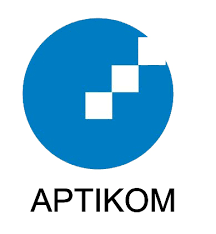Evaluating the Hybrid Multi-Protocol Label Switching (MPLS) on the Enhanced Interior Gateway Routing Protocol (EIGRP)
DOI:
https://doi.org/10.18196/eist.v3i2.16865Keywords:
Enhanced Interior Gateway Routing Protocol (EIGRP), Multi-Protocol Label Switching (MPLS), mesh topology, linear topology, Quality of Service (QoS)Abstract
The development of technology and communication is expanding rapidly. In this case, the internet has become a vital necessity in globalization. Technological innovations are required to create a seamless, fast, and secure communication system. This research aims to evaluate the Enhanced Interior Gateway Routing Protocol (EIGRP) implementation by applying the Multiprotocol Label Switching (MPLS) technology. This study adhered to several stages in the Network Development Life Cycle (NDLC) method. The results of the two technology combinations, EIGRP and MPLS, demonstrated MPLS network simulation testing in several dynamic routing systems: EIGRP and OSPF, identified through the Quality of Service (QoS) value. It revealed that the best performance was EIGRP with a throughput of 2152.5 bps, delay of 335.6 ms, and jitter of 411 ms. Furthermore, MPLS and EIGRP network redundancy was better applied in the mesh topology with a multi or backup link than in the linear topology with a single link.
References
Asharudin, F., Utami, E., 2014. Penerapan Augmented Reality Untuk Membangun Miniatur Desain pada Topologi Jaringan Komputer 6.
Dey, G.K., Ahmed, Md.M., Ahmmed, K.T., 2015. Performance analysis and redistribution among RIPv2, EIGRP & OSPF Routing Protocol, in: 2015 International Conference on Computer and Information Engineering (ICCIE). Presented at the 2015 International Conference on Computer and Information Engineering (ICCIE), IEEE, Rajshahi. Bangladesh, pp. 21–24. https://doi.org/10.1109/CCIE.2015.7399308(diakses pada 19 Maret 2020).
Diansyah, T.M., 2017. Analisa Routing EIGRP (Enhanced Interior Gateway Routing Protocol) Dalam Jaringan MPLS (Multi Protocol Label Switching) Untuk Mendapatkan Kinerja Terbaik. https://doi.org/10.31227/osf.io/jxsa2 (diakses pada 20 Maret 2020).
Dwi Ayu Rahmadita dan M.Zen Samsono Hadi, 2013. Analisa Aplikasi VOIP pada Jaringan Berbasis MPLS - EEPIS. http://repo.pens.ac.id/345/ (diakses pada 18 Maret 2020).
Gam Gempita Alam, G., 2010. Analisa Performansi Algoritma Routing MPLS Dan OSPF Untuk Layanan Video Streaming Pada Jaringan IMS (Diploma). Universitas Komputer Indonesia.
Hariyadi, C., 2003. Graf Dalam Topologi Jaringan 5.
Hariyawan, M.Y., Susantok, M., Tampubolon, R., 2011. Study Analisis QoS Pada Jaringan Multimedia MPLS. Seminar Nasional Teknologi Informasi Komunikasi dan Industri 0.
M. Fauzan Edy Purnomo, St., Mt., Dewi Yolanda Susi Andari., Dr. Ir. Sholeh Hadi Pramono, Ms, 2013. Simulasi Kinerja Routing Protokol Open Shortest Path First (OSPF) Dan Enhanced Interior Gateway Routing Protocol (EIGRP) Menggunakan Simulator Jaringan Opnet Modeler. vol 14.5
M. Moriandy Gozali dan Linna Oktaviana Sari. 2017. Analisa Quality Of Service (QoS) Trafik Multimedia pada Pemodelan Jaringan Multiprotocol Label Switching (MPLS) Menggunakan Router Mikrotik. https://www.neliti.com/publications/201877/analisa-quality-of-service-qos-trafik-multimedia-pada-pemodelan-jaringan-multipr (diakses pada 19 Maret 2020).
Metode - Metode dalam Metodologi Peneitian - Metode Penelitian. https://sites.google.com/a/student.unsika.ac.id/metodepenelitian owl/Tugas-updates/metode-metodedalammetodologipeneitian (diakses pada 22 Maret 2020).
Musril, H.A., 2016. Analisis Unjuk Kerja RIPv2 Dan EIGRP Dalam Dynamic Routing Protocol. JETT 2. https://doi.org/10.25124/jett.v2i2.99 (diakses pada 20 Maret 2020).
Nugraha, B., 2017. Analisa Perbandingan Performa Teknologi MPLS-TP (Multiprotocol Label Switching - Transport Profile) Dengan Topologi Ring dan Point-To-Point 8, 7.
Nurhasanah, N.A., Wahidah, I., Cahyono, B., 2017. Implementasi Seamless Multiprotocol Label Switching (MPLS) Pada Jaringan MPLS 5.
Pratiwi, P.E., Isnawati, A.F., Hikmaturokhman, A., n.d. Analisis QoS Pada Jaringan Multi Protocol Label Switching (MPLS) Studi Kasus Di Pelabuhan Indonesia Iii Cabang Tanjung Intan Cilacap 11.
Rahmawati, I.D., Saleh, A., Winarno, I., 2011. Analisa QoS pada Jaringan MPLS IPv6 Berbasis Routing OSPF. EEPIS Final Project.
Saleh, I., Wintolo, H., Nugraheny, D., 2014. Analisa Perbandingan Waktu Dan Kecepatan Transfer Pada Multi Protocol Label Switching (MPLS) Dengan Virtual Private Network (VPN) Untuk Perpindahan Dokumen Pada Jaringan Komputer. Compiler 3. https://doi.org/10.28989/compiler.v3i1.70 (diakses pada 22 Maret 2020).
Sitorus, H.S., n.d. Analisis Perbandingan QoS MPLS dan RPR pada Jaringan Transport Metro Ethernet 4.
Wulandari, R., 2016. Analisis QoS (Quality Of Service) Pada Jaringan Internet (Studi Kasus : Upt Loka Uji Teknik Penambangan Jampang Kulon – LIPI). JuTISI 2. https://doi.org/10.28932/jutisi.v2i2.454 (diakses pada 22 Maret 2020).
Wulansari, F., Munadi, R., Mayasari, R., 2016. Analisis Jaringan MPLS-TE Fast Reroute Menggunakan Metode QoS Diffserv Berbasis Server OpenIMSCore 8.



